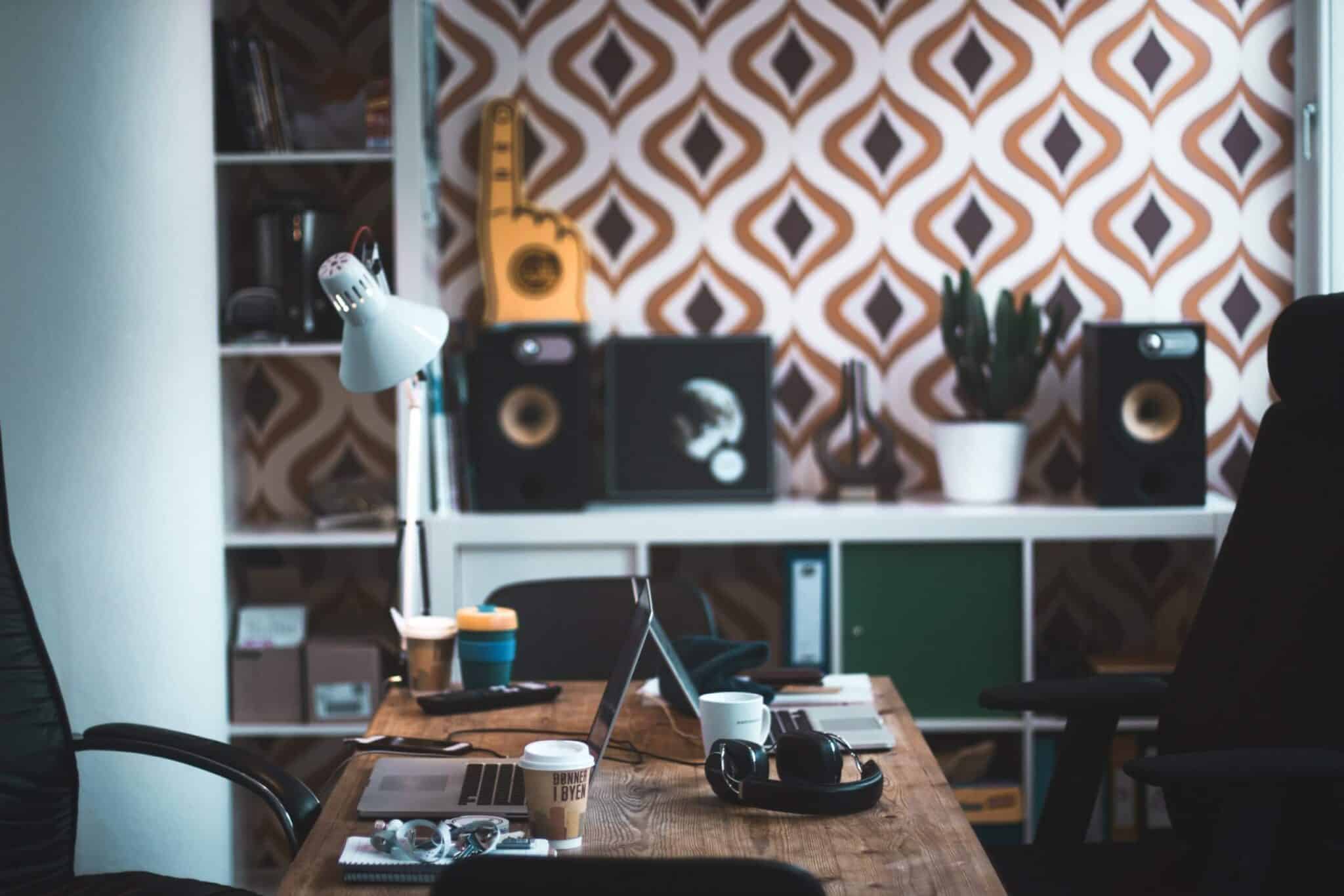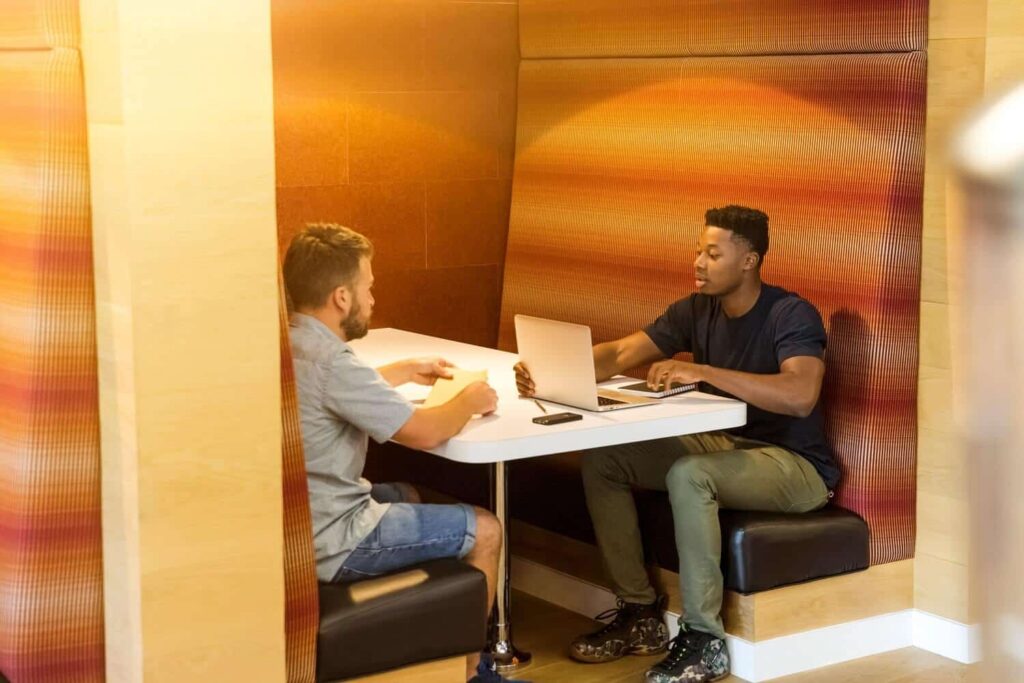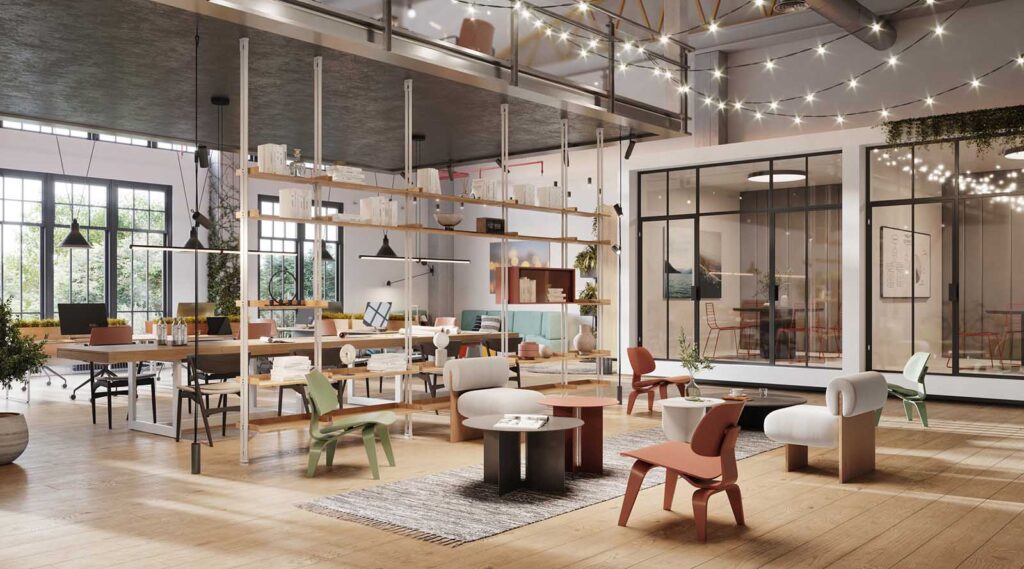 The average North American spends 90% of their lives indoors, and most of that time at work. In this Workplace Unplugged Interview, Natalie Grasso tells us how she is leading an effort to improve the workplace experience through sharing stories about design – and how design can make a difference to people, their businesses and their business’s bottom line.
The average North American spends 90% of their lives indoors, and most of that time at work. In this Workplace Unplugged Interview, Natalie Grasso tells us how she is leading an effort to improve the workplace experience through sharing stories about design – and how design can make a difference to people, their businesses and their business’s bottom line.
Natalie Grasso is now Workplace Knowledge Consultant at Herman Miller, but we caught up with her when she was still the Senior Editor at Work Design Magazine, a digital magazine dedicated to exploring the evolution of workplace strategy, innovation, and design through thought provoking articles, panels and case studies. Natalie came to Work Design in 2011 after earning a master’s in interior design at the Corcoran College of Art + Design.
Work Design Magazine (WDM), with a readership of over 30,000 viewers a month, showcases the latest and greatest ideas that are shaping our workplaces. We wanted to know how Natalie keeps her finger on the pulse of top office design trends and connecting with people and having conversations topped the list.
NG: We are out there talking to so many people, and we have so many people reach out to us with new projects. First and foremost, we are trying to find the latest projects, some of those projects we talk to the experts that worked on them and it really allows us not only to be talking about these cool companies who have these cool new workplaces but actually dig into the stories behind it and the people who execute and manage the changes behind the curtain.
Natalie’s role at WDM gives her a bird’s eye view of trends across the industry. Naturally, we wanted to know what the top three trends facilities managers should keep in mind when designing office space were.
Natalie says that one of the hottest trends out there right now is the great open office space debate. To go open or not to go open? That is the question.
NG: The big headlining trend, are you going open? Are you going back to private offices after you tried open and it didn’t work for you? It’s not just the trend towards open but the pendulum swing back. And we get a lot of people finally understanding – whether it’s through trial and error or seeing what their peers are doing – that one size doesn’t fit all when it comes to office spaces.
But, open office environments aren’t a black or white equation. What is Natalie’s advice for those deciding between designing open office floorplans or not? Give employees a bit of both.
NG: A lot of times it ends up being that you need a bit of both. You still need private space and spaces for heads down work. And there is a benefit to open spaces in some cases. It’s just really about needing to know your employees, who you are designing for and what the job is you are trying to do in that space.
The second trend Natalie has observed is activity-based working. Office environments need to be designed to accommodate the work employees are doing.
NG: Activity-based working is about designing environments in which there are a bunch of different environments within one office space. Employees might move from a conference room to a huddle room, to a lounge, to a private desk depending on what the task is at hand.
Natalie tells us how the third trend that is greatly influencing modern office design is unprecedented mobility in the workplace. (I.e. the flexible workplace.)
NG: Whether it is within the workplace and you don’t have an assigned desk and you are moving from space-to-space as in the activity-based model. Or you get to be mobile, you get to be remote and you get to work from home some of the time or all of the time. That relates directly to space, and what facilities managers need to keep their thumb on because it relates to how much space you need and how it should be divided up.
(…And I think we might know a tool to help with managing office space – pardon the shameless plug!)

With the war on talent and many organizations leveraging office design to attract and retain top young talent, we asked Natalie her opinion on the extent to which she saw Millennials were impacting the design of the workplace. Natalie says she has two thoughts on how she sees Millennials influencing the design of modern workplaces.
NG: My first thought is that you definitely see the impact, where now everyone can imagine what a tech startup office looks like. I read an article today where they describe it as a fast food indoor playground and that’s what we think of an office now to attract and retain young talent. And you see a lot of headlines about Millennials related to aspects like that.
But Natalie tells us that’s only one side of the coin. She says the role of technology is forcing the change we see today. The main driver of change in the workplace is the need to keep up with technology, more so than catering to the tastes of Millennials.
NG: On the other side, it might not be so much about Millennials at all as it is about technology. Where you just have this new generation and it wouldn’t matter who it was, or what age they were. It is just the group that has grown up in and around all this technology. They have been using these different ways of communicating and these different ways of doing work, even as early as kindergarten. We now have digital natives coming into the workplace and it is just different expectations around technology. And I think in so far as a company trying to attract and retain talented Millennials, they just have to be more tech savvy than they have to be overly focused on some sort of colorful and almost silly amenity

Curious about the context of culture in relationship to office space and design, we asked Natalie to tell us more about how facilities managers can use office design as a tool to shape company culture.
NG: I tend to think that first and foremost there needs to be an effort in the workplace to understand and shape the culture that currently exists. And then for facilities managers, the next step is to come in with an integrated workplace strategy. That means facilities needs to work with HR, HR needs to work with IT and IT needs to work with designers to build a space that suits the culture that’s already there and hopefully already thriving. I think if the culture isn’t there first you will have an awfully hard time as a facilities manager creating it or even shaping it with the workspace alone.
So, what is the impact of design on the workplace? How much does one’s office space impact the culture of an organization?
NG: I think one thing we can say for sure: If you really are a company with a thriving culture and you are about to renovate your workspace or move into a new one, and you have taken the right steps to create it, it’s going to be “a better” space. I think that’s the double whammy. You already have a great culture, and now you are moving towards creating a great space for that culture.
The bottom line? Natalie says that by creating flexible office spaces that enable people to be happier at work, and enable them to do their jobs better we have the opportunity to greatly impact the workplace experience.
Does your office design align with your employee needs and your organizational goals? We want to know how office workspace and design plays a role in your organization.
Photos: DesignCue, Snappa.io, Thomas Litangen, Matt Hoffman,




